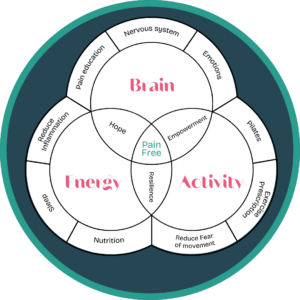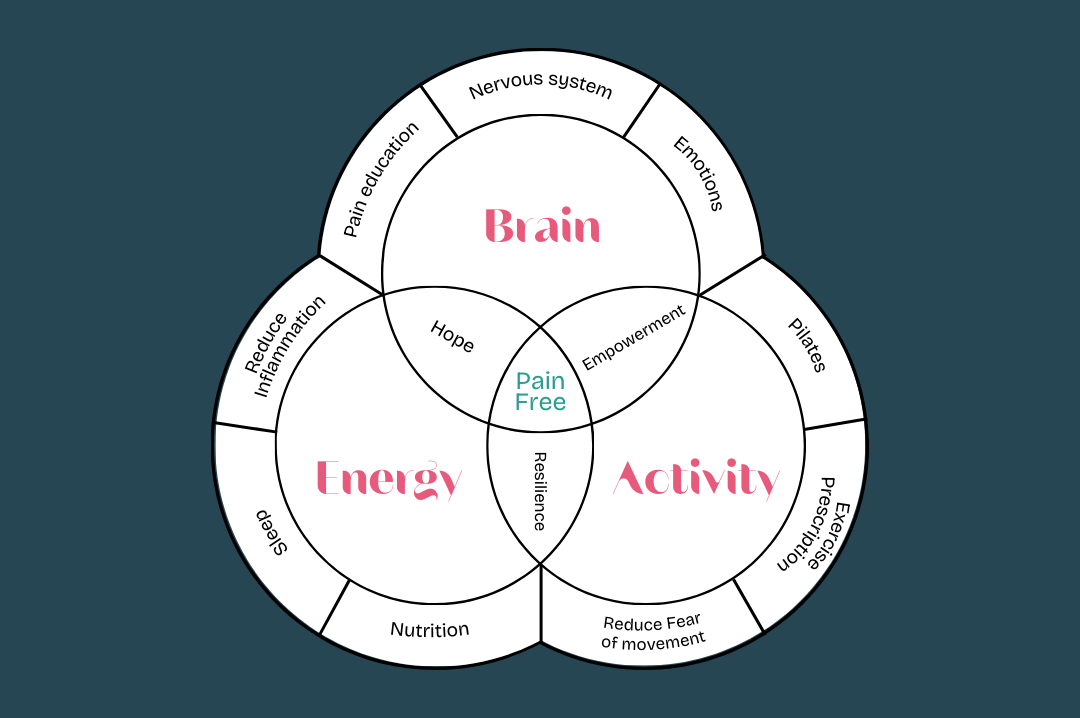Twelve years ago, while serving in the Royal Air Force as a Physical Education Officer, I was diagnosed with Degenerative Disc Disease. The diagnosis came with warnings about my spine’s fragility and advice to avoid high-impact activities. You can imagine the impact of this diagnosis on my physical and mental wellbeing. I was worried about my career and how I was going to live with this pain for the rest of my life when, at the time, I was only 30 years old. Today, I am pain-free and recently completed a half marathon. My journey to recovery involved a combination of therapies, education, and lifestyle changes. This experience inspired me to help others overcome chronic back pain, working alongside various healthcare professionals, including chiropractors.
Understanding Pain: The Key to Recovery
My turning point in my recovery came from watching a video from pain specialist Lorimer Moseley. His explanation that pain is not equal to tissue damage was eye-opening. This understanding aligns with the chiropractic approach, which emphasises the body’s innate ability to heal and the importance of addressing the root causes of pain rather than just symptoms.
I learned that persistent pain is often linked with stress, anxiety, and fear. Reflecting on my first pain onset, I realised it coincided with two significant life moments – new motherhood and my husband’s deployment. Feeling worried, stressed and lack of sleep from being a new mother were potential causes to my pain, which in turn caused a change in my identity, which I struggled to cope with.
Pain and inflammation are designed to protect us. This is easy to understand when we sprain an ankle which gives us acute pain. We experience pain and inflammation in order to rest the ankle, keep weight off it, and allow it time to heal. Then pain disappears as the tissue heals. However, when pain persists beyond the typical 12-week tissue healing period, it becomes chronic or persistent. This is where it gets complicated, as the pain may no longer be related to tissue damage but rather to Neuroplastic pain, which is a wiring issue of the nervous system. When your body senses that you are in danger, whether this is actual danger or perceived danger, and emotions and feelings of stress can make the body feel like it is in danger, the nervous system causes muscles to tense up, restricting oxygen and causes pain. The good news is, that neuroplastic pain can change if we rewire the nervous system by encouraging feelings of safety. In other words there is hope, and you can overcome your persistent pain.
The mind-body connection is crucial in understanding and treating chronic pain.
The BEAT Pain Approach to Pain Management
 The more I learned about pain, the more I was able to overcome it. I have spent the last 12 years learning about pain and implementing it into my practice. As a result, I developed the BEAT pain approach to pain management, which complements various therapies, including chiropractic care:
The more I learned about pain, the more I was able to overcome it. I have spent the last 12 years learning about pain and implementing it into my practice. As a result, I developed the BEAT pain approach to pain management, which complements various therapies, including chiropractic care:
- Brain: By learning about the brain and nervous system we can start to re-wire them so that we experience less pain. It is also extremely empowering understanding how pain works which makes us fear it less and by reducing fear we reduce pain.
- Energy: Maximising sleep and nutrition for optimal healing. Without sleep we simply can’t get better and poor nutrition can contribute to inflammation, thus contributing to pain. By improving our diets we can reduce inflammation and encourage healing. Chiropractors will also often provide advice on sleep posture and nutrition to support overall health and recovery.
- Activity: Movement and exercise are vital. Our bodies, including our spines, are designed for movement. Chiropractors can provide guidance on safe exercises and movements to support your spinal health.
- Therapy: Various therapies, including chiropractic care, massage, acupuncture, and others, can play a role in pain management. By having a greater understanding of your pain you are better able to choose which type of therapy will best suit you. The key is finding the right combination for each individual.
Collaborative Care for Optimal Results
Effective pain management often requires a multi-disciplinary approach. Chiropractors, massage therapists, sports therapists, and other healthcare professionals can create comprehensive treatment plans. For instance, chiropractic adjustments can improve spinal alignment and function, while massage therapy might address muscular tension, and pain education can help patients understand and manage their condition better.
Here are some general tips to implement the BEAT approach in your life:
- Educate yourself about pain science through reputable sources.
- Practice stress-reduction techniques like meditation or deep breathing.
- Prioritise sleep hygiene and a balanced, anti-inflammatory diet.
- Engage in regular, enjoyable physical activities.
- Consult with healthcare professionals to develop a personalised treatment plan.
Conclusion
Recovery from chronic pain is possible with the right approach and support. I am testament to that! By combining pain education, lifestyle changes, appropriate therapies, and a positive mindset, many people can overcome persistent pain. Remember, every journey is unique. My BEAT pain program can help you on your pain management journey. It is a 6 week one-to-one coaching program where we go through these 4 pillars at a pace suitable to you. You can find out more on my website katierothwell.co.uk where you can also watch a free video about my program.












